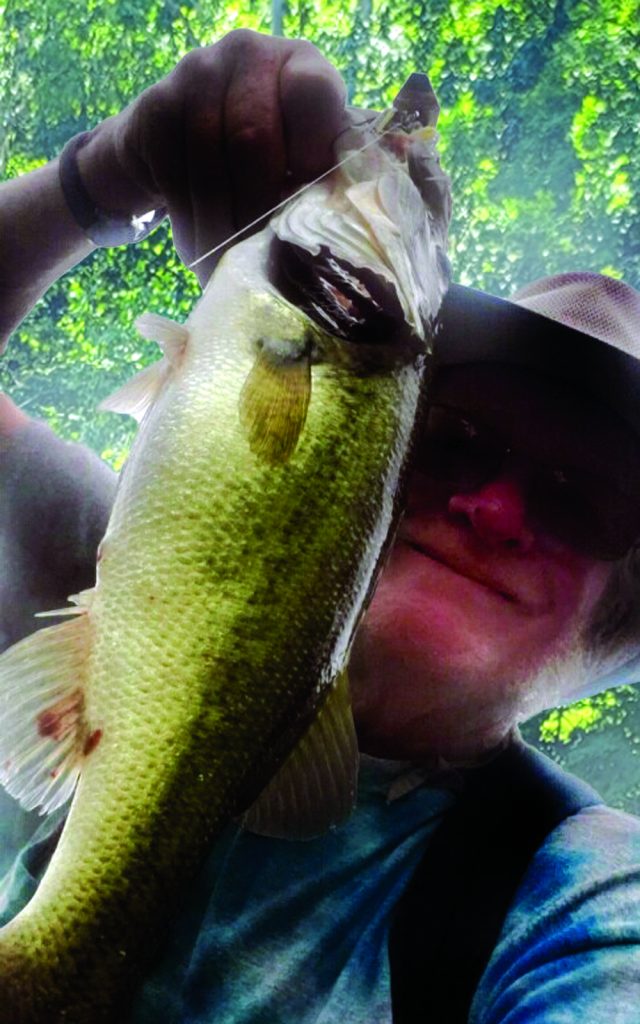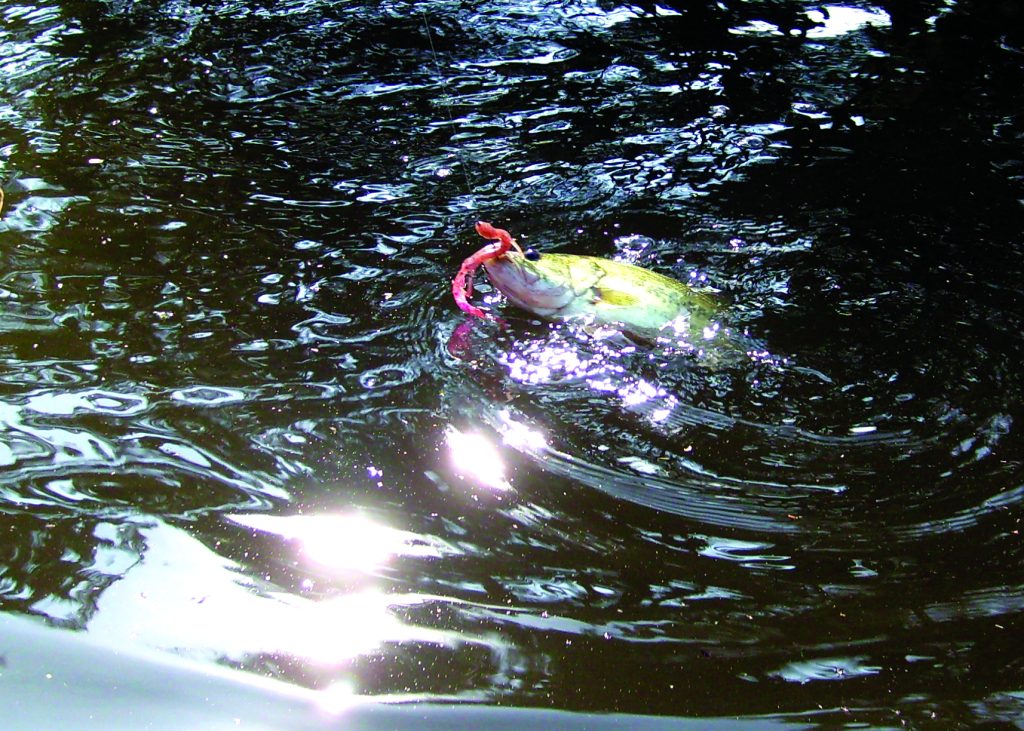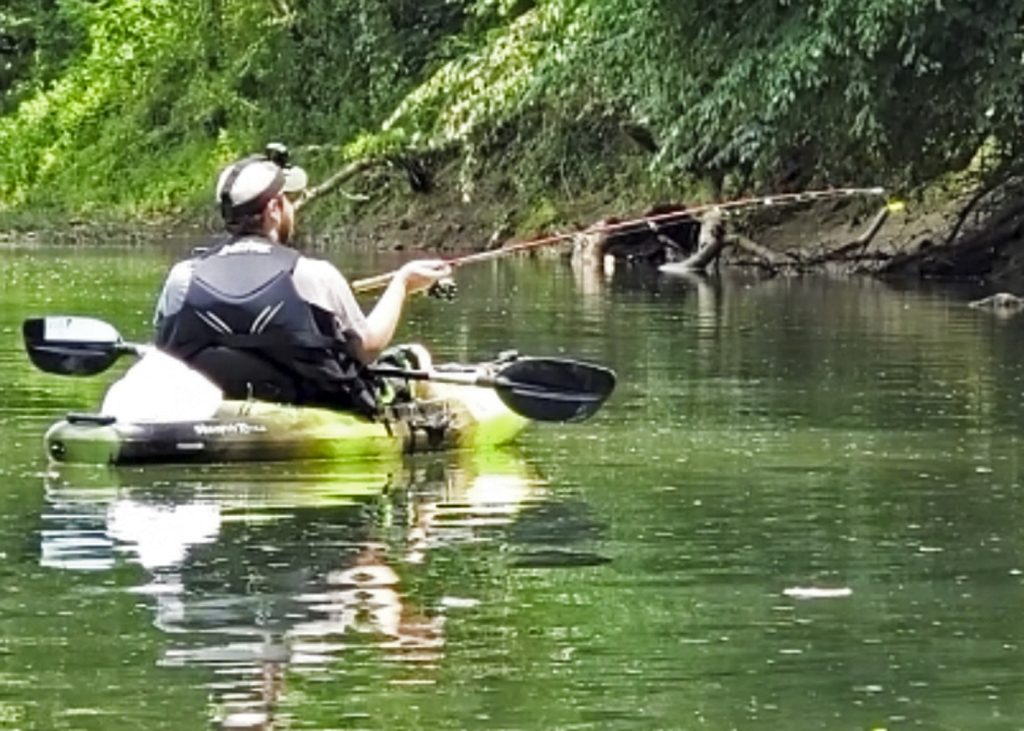
By Allen Hamrick
It’s officially summer time, and it is hot enough to fry eggs on a hard hat. Looking for lunker bucket mouths on the river is a tough chore, especially when water levels are so low. The bites are as hard to get as a free ride to the moon. In the lakes, the bass become slow to bite, but they still have to eat. Finesse fishing is the right page in the book to go to, but not a given. The bass do as humans and go to where the food is. However, they don’t want a sun tan to go with their meal so they go deeper, drop their shades and wait at the drive through for a meal to come. On a river, bass are outlaws and differ from lake bass simply because the habitats between the two water bodies are different. Right now, the river is low and slow moving in most of the bends and eddies. With tributaries low or dry, the river bass have to adapt and so does the fisherman. Fish need oxygen to survive, and in the rivers, moving water provides that oxygen and tends to be cooler than still water. Bass are a little easier to find on rivers – they do not go great distances or run for Davey Jones’ locker at every opportunity. Water current will determine where you will find lunker bass. Picking the proper bait along with waiting for dinner time will yield good results, and chances are the “one that got away” tales will be the one that you landed.

If you’re in a boat or kayak, there are a few spots you can pretty much guarantee hook ups. An outside bend in the river where the water seems to be the strongest is a good place to grab a sandwich and a cola and start casting. Drop offs and eroded tree roots are in these areas, and big small mouths love to hang out there. They lay in wait in these areas to grab bait that may drift into these pockets. Find the areas with fallen trees and big rocks and you will lock onto one of the best situations for catching bass. It takes some diligence to find these places, but when you do, know how to set a hook because you will be in the perfect storm. Don’t forget the wacky rigs and jigs or whatever works for you. Crank baits or spinner baits are good go to options, but if it is a tree top, then go upstream and let a jig or a worm dangle just outside the top and get the bass to come out. They will come if its dinner time.
When there is a creek that empties into the river, don’t overlook these spots, especially if it drops off into deeper water real quick. Bass, especially small mouth, love going up into the creeks to feed on chubs and crawdads when the river is down like it is now. They will wait outside the spillway for the food to come to them. Bass are predators and either wait on food or go into a frenzy; either way, fish from upstream and let the bait go to them. They are creatures of habit just like us around the family barbecue. We don’t sit around, we stand around the grill and wait, and bass don’t veer too far away from those habits on a river.

Manmade cover on a river, especially if it is old, including docks, drain pipes or culverts where the water drains on a drop are good spots. Bugs and critters that bass love to feast on flow out of the pipe, get confused and can’t get their bearings right, and the bass sometimes stir into a feeding frenzy. Throwing bait like a worm, jig or a top water popper are good baits to try. When bass are not crazy hungry they sometimes hang out on the lower side of the bar. A bar is a hump or a high ridge that drops off into deeper water and right now they can be spotted and mapped for future fishing when the river is up again. When they do get the notion to feed, they will move up to the top of the bar and settle into a good meal. Big bass will stay lower on the bar to catch the stray morsel that comes by. So if you are lunkering, stay low on the bank. If fishing slows down, as it has now in this heat, a worm is the go to on a Carolina rig. There are many ways to catch bass on the river and no doubt there are many secrets that are honed by fishermen that will go to their grave with them. However, these I’ve mentioned are good go to spots, and you should have success.
There are a host of lures to choose from, but on the river, there are still just a few that will work on a daily basis. Small mouths feed on mayflies, grasshoppers, and other types of baitfish, so fishing top water baits like the Heddon tiny torpedo, as well as other types of poppers, are a good choice. For lunker largemouth and smallmouth, crawdads and big worms are the typical go to; cast these when they are in the deeper eddies, undercut banks and on deep cover. Remember, if you’re looking to hook a lunker bass, reading the river instead of a book is the key to getting them hooked. A weekend on the Elk River fishing for bass is a weekend well lived, so keep a tight line.


